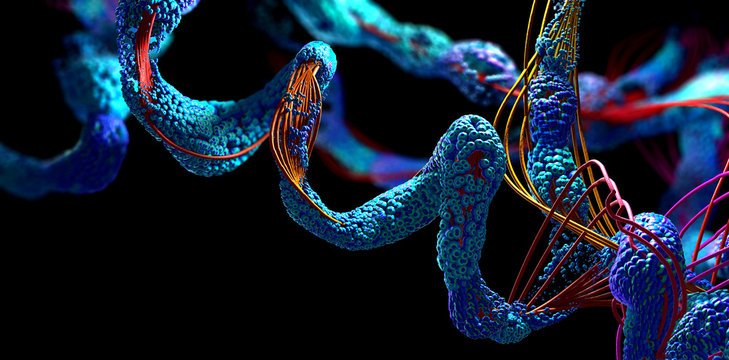Enzymes are essential biological molecules that facilitate countless processes within our bodies. Among these essential enzymes, proatese stands out for its various roles in digestion, immune function, and cellular regulation. In this comprehensive guide, we will explore the fascinating world of proatese enzymes, examining their structure, types, functions, benefits, and applications across different disciplines. If you’re a health enthusiast, someone seeking better digestive health, or a student in the biological sciences, this article is for you.
What are Proatese Enzymes?
Proatese enzymes, commonly known as proteases, are proteins that catalyze the breakdown of other proteins into smaller peptides or amino acids. This process, called proteolysis, is crucial for numerous biological functions. Proatese enzymes are found in nearly all living organisms, including bacteria, plants, animals, and humans. They play a vital role in various physiological processes, making them indispensable for life.
Understanding proatese is essential for anyone interested in health or biology. These enzymes are not just limited to digestion; they affect many aspects of our well-being, from immune response to cellular repair. Their versatility and importance make them a fascinating subject of study.
The significance of proatese extends beyond human health. They are also used in various industrial applications, including food processing, pharmaceuticals, and biotechnology. This makes them a critical focus for scientific research and innovation.
The Structure of Proatese Enzymes
Proatese enzymes have a unique and complex structure that allows them to perform their catalytic functions. They consist of one or more polypeptide chains folded into a specific three-dimensional shape. The active site of a proatese enzyme is where the substrate binds and undergoes catalysis. This site is highly specific, often recognizing only particular peptide bonds within the substrate protein.
The structure of proatese enzymes is crucial for their function. Changes in the enzyme’s shape or the environment can significantly impact its activity. For instance, factors like pH, temperature, and the presence of inhibitors can affect the enzyme’s performance. Understanding these factors is essential for optimizing the use of proatese in various applications.
Recent advancements in structural biology have provided detailed insights into the structure of proatese enzymes. Techniques like X-ray crystallography and cryo-electron microscopy have revealed the intricate details of these enzymes, helping scientists design more effective inhibitors and therapeutic agents.
Types of Proatese Enzymes
Proatese enzymes can be classified into several types based on their catalytic mechanism and the nature of their active site. The major classes include serine proteases, cysteine proteases, aspartic proteases, and metalloproteases. Each class has distinct characteristics and functions.
Serine proteases are among the most well-studied proatese enzymes. They have a serine residue in their active site, which plays a crucial role in catalysis. Examples include trypsin and chymotrypsin, which are involved in digestion.
Cysteine proteases have a cysteine residue in their active site. They are involved in various cellular processes, including apoptosis and immune response. Papain, found in papaya, is a well-known example.
Aspartic proteases have two aspartic acid residues in their active site. They are involved in protein degradation and processing. Pepsin, a digestive enzyme in the stomach, belongs to this class.
Metalloproteases require a metal ion, usually zinc, for their catalytic activity. They are involved in tissue remodeling and wound healing. Matrix metalloproteinases (MMPs) are a prominent example.
Functions of Proatese Enzymes
Proatese enzymes perform a wide range of functions in the body. One of their primary roles is in digestion, where they break down dietary proteins into absorbable amino acids. This process begins in the stomach with enzymes like pepsin and continues in the small intestine with enzymes like trypsin and chymotrypsin.
Beyond digestion, proatese enzymes are involved in numerous physiological processes. They play a crucial role in the immune system, helping to activate and regulate immune responses. Proteases like caspases are involved in apoptosis, a process of programmed cell death that is essential for maintaining cellular health.
Proatese enzymes also participate in cellular regulation. They help in the processing and activation of various proteins, including hormones and growth factors. This regulation is vital for normal cell function and development.
Research has shown that imbalances in proatese activity can lead to various diseases, including cancer, inflammation, and neurodegenerative disorders. Understanding the functions of these enzymes is essential for developing therapeutic strategies to treat these conditions.
Benefits of Proatese Enzymes
The benefits of proatese enzymes are vast and varied. In the context of digestive health, they help improve nutrient absorption and reduce gastrointestinal discomfort. Supplementing with protese enzymes can benefit individuals with digestive disorders, such as irritable bowel syndrome (IBS) and lactose intolerance.
Proatese enzymes also have anti-inflammatory properties. They help break down inflammatory proteins and reduce swelling and pain. This makes them useful in managing conditions like arthritis and sports injuries.
In addition to their health benefits, protese enzymes have applications in skincare. They help exfoliate the skin by breaking down dead skin cells, promoting a smoother and more radiant complexion. Enzymes like papain and bromelain are commonly used in skincare products for this purpose.
The benefits of protese enzymes extend to the immune system as well. They help regulate immune responses and support the body’s defense mechanisms. This makes them valuable for overall health and well-being.
Applications of Proatese Enzymes in Customer Service
Proatese enzymes are used in various industrial applications, thanks to their catalytic properties. In the food industry, they are used to tenderize meat, clarify beer, and produce cheese. Enzymes like rennet, which contains chymosin, are essential for cheese-making.
In the pharmaceutical industry, protese enzymes are used to develop drugs for treating various diseases. Protease inhibitors, for example, are used to treat HIV by blocking the activity of viral proteases. Enzyme replacement therapies also use protese enzymes to treat genetic disorders like Gaucher’s disease.
Proatese enzymes are also employed in biotechnology for protein analysis and purification. Techniques like proteomics rely on these enzymes to digest proteins into peptides for mass spectrometry analysis. This helps identify and characterize proteins in complex biological samples.
The versatility of protese enzymes makes them valuable tools in scientific research and industrial processes. Their ability to catalyze specific reactions under mild conditions offers significant advantages over traditional chemical methods.

Proatese Enzymes in Human Resources
In the field of human resources, protese enzymes have applications in drug testing and forensic analysis. Protease inhibitors are used to detect drugs and toxins in biological samples. These inhibitors prevent the breakdown of target proteins, making it easier to identify and quantify substances of interest.
Proatese enzymes are also used in the development of diagnostic tests for various diseases. They help detect biomarkers and pathogens in clinical samples. For example, enzyme-linked immunosorbent assays (ELISAs) use proteases to detect specific proteins and antibodies in blood samples.
In forensic science, protese enzymes are used to analyze biological evidence, such as blood and tissue samples. They help break down complex proteins into smaller peptides, facilitating the identification of suspects and victims.
The applications of proatese enzymes in human resources and forensic science highlight their importance in medical and legal fields. Their ability to catalyze specific reactions with high precision makes them valuable tools for analysis and diagnostics.
Proatese Enzymes in Data Analysis
Proatese enzymes play a crucial role in data analysis, particularly in the field of bioinformatics. They help process and analyze large datasets of protein sequences and structures. This information is essential for understanding protein function and interactions.
In proteomics, protese enzymes are used to digest proteins into peptides for mass spectrometry analysis. This technique, known as bottom-up proteomics, helps identify and quantify proteins in complex biological samples. The data generated from these analyses are used to study protein expression, modification, and interaction.
Proatese enzymes are also used in the development of computational models for protein structure prediction. These models help predict the three-dimensional structure of proteins based on their amino acid sequences. This information is valuable for understanding protein function and designing drugs.
The integration of protese enzymes in data analysis and bioinformatics highlights their significance in modern scientific research. Their ability to process complex biological data is essential for advancing our understanding of proteins and their functions.
Proatese Enzymes in Supply Chain Management
In supply chain management, protese enzymes are used to optimize various processes, from production to distribution. They help improve the efficiency and quality of products, reducing costs and waste.
In the food industry, protese enzymes are used to improve the texture and flavor of processed foods. For example, enzymes like papain and bromelain are used to tenderize meat, making it more palatable. This reduces the need for chemical additives and enhances the nutritional value of the food.
Protese enzymes are also used in the production of biodegradable plastics and detergents. They help break down complex polymers into simpler molecules, making them more environmentally friendly. This contributes to sustainable supply chain practices and reduces the environmental impact of industrial processes.
The applications of protese enzymes in supply chain management demonstrate their versatility and importance in various industries. Their ability to catalyze specific reactions under mild conditions offers significant advantages over traditional chemical methods.
Proatese Enzymes in Marketing
In marketing, proatese enzymes are used to develop and promote products with unique benefits. They help create innovative solutions that meet consumer needs and preferences.
In the skincare industry, proatese enzymes are used to develop exfoliating products that promote smoother and more radiant skin. Enzymes like papain and bromelain are marketed for their natural exfoliating properties, attracting consumers seeking gentle and effective skincare solutions.
Proatese enzymes are also used in the development of dietary supplements and functional foods. These products are marketed for their digestive and anti-inflammatory benefits, appealing to health-conscious consumers.
The applications of proatese enzymes in marketing highlight their potential to create value-added products. Their unique properties offer opportunities for innovation and differentiation in competitive markets.
Conclusion
Proatese enzymes are essential biological molecules with diverse functions and applications. From digestion and immune response to industrial processes and scientific research, their versatility and importance cannot be overstated.
Understanding the structure, types, functions, and benefits of proatese enzymes is crucial for health enthusiasts, digestive health seekers, and students in biological sciences. Their ability to catalyze specific reactions offers significant advantages for various applications, from food processing to drug development.
If you are interested in exploring the potential of proatese enzymes further, consider consulting scientific literature or seeking expert guidance. The field of protease research is continually evolving, offering new insights and opportunities for innovation. By staying informed and engaged, you can harness the power of proatese enzymes to improve health, advance science, and drive industrial progress.












